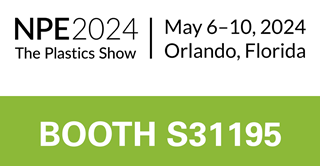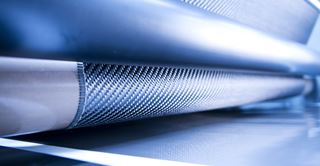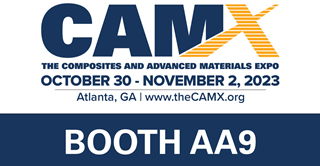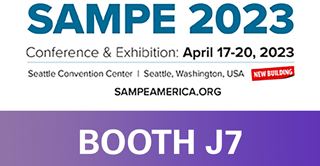Blog Posts
Toray Celebrates 1 Year Since the Launch of the James Webb Space Telescope
9 December 2022One year on from its initial launch, the James Webb Space Telescope (JWST) continues to capture stunning images of the cosmos that shed new light on the creation of the universe. With the one year anniversary coming up on Christmas Day 2022, we take a look back at a remarkable first year of discovery for JWST.
After decades of work, NASA successfully launched JWST on the 25th December 2021 from Europe’s Spaceport in French Guiana. JWST is the most powerful telescope ever created, designed to capture clearer images of distant galaxies, allowing for new insight into how the universe began, and how it continues to evolve.
The launch was the end result of decades of development and planning from NASA. In collaboration with the ESA (European Space Agency) and the CSA (Canadian Space Agency), this was an international effort to develop a successor to the Hubble Space Telescope. The successful launch was a massive moment of relief and joy for the countless passionate individuals that have played a part in the design and production of the telescope. Toray Advanced Composites were among those celebrating, as their material features as the primary composite material on-board the telescope.
Toray RS-3 and RS-3C have been used on the 3 main components of the telescope: the Optical Telescope Element (OTE), the Integrated Science Instrument Module (ISIM), and the Spacecraft Element (SCE). For more information on how our material was implemented into JWST you can read our blog, or download our in-depth case study.
Over this first year James Webb has captured a variety of incredible images that have shone new light on the universe around us. Some highlights include:
 NGC 3324– 12th July
NGC 3324– 12th July
The first images captured by JWST made international headlines back in July. The breath-taking pictures of the NGC 3324 in the Carina Nebula, show areas of star birth that were previously invisible, taking the form of these ‘Cosmic Cliffs’.
Cosmic Tarantula – 6th September
The so-called Cosmic Tarantula, here captured by JWST’s Near-Infrared Camera (NIRCam), is the largest star-forming region in the Local Group (the galaxies nearest our Milky Way). The region, named after the resemblance to a burrowing tarantula’s home, contains the hottest and largest stars known to date. This region has a chemical composition similar to the universe during the “cosmic noon”, a period where star-formation was at its peak. Because of this, these new images may show new insight into how stars were formed in the first few billion years of the universe.
Near-Infrared Camera (NIRCam), is the largest star-forming region in the Local Group (the galaxies nearest our Milky Way). The region, named after the resemblance to a burrowing tarantula’s home, contains the hottest and largest stars known to date. This region has a chemical composition similar to the universe during the “cosmic noon”, a period where star-formation was at its peak. Because of this, these new images may show new insight into how stars were formed in the first few billion years of the universe.
 Pillars of Creation – 28th October
Pillars of Creation – 28th October
This image captured using James Webb’s Mid-Infrared Instrument (MIRI) shows the ‘Pillars of Creation’ covered with interstellar dust and gas to create this haunting, claw-like image. The Pillars of Creation is set within the vast Eagle Nebula, which lies 6,500 light-years away from Earth, and is 4 to 5 light years in size. This is an active star-forming region within the Eagle Nebula where new stars are born within these clouds of gas and dust.
Exoplanet Atmosphere – 22nd November
The most recent breakthrough of the project has been the development of the first ever molecular  and chemical profile of a distant planet’s skies. Data acquired by JWST has allowed NASA to create readings of the atmospheric composition of WASP-39 b, a planet roughly the size of Saturn orbiting a star 700 light-years away from Earth. Analysis of the atmosphere has revealed that sulfur dioxide (SO2) is among the chemicals present. This is the first time that SO2 has been detected in an exoplanet’s atmosphere.
and chemical profile of a distant planet’s skies. Data acquired by JWST has allowed NASA to create readings of the atmospheric composition of WASP-39 b, a planet roughly the size of Saturn orbiting a star 700 light-years away from Earth. Analysis of the atmosphere has revealed that sulfur dioxide (SO2) is among the chemicals present. This is the first time that SO2 has been detected in an exoplanet’s atmosphere.
Toray Advanced Composites is honored to have their composite material, specifically RS-3 and RS-3C, feature throughout JWST. These composite materials were chosen for this prestigious application due to their lightweight properties, and their ability to retain shape and toughness at the extreme low temperatures encountered in space. As JWST will need to operate at potential lows of 243°C (-406°F), these properties are essential for successful launch and orbit.
Looking back at last year’s launch, Sean Johnson (Satellite Business Segment Leader at Toray Advanced Composites US site) was thrilled with pride:
“To see James Webb successfully launch after our nearly two decades of involvement in the program was a huge and emotional moment for Toray as a whole and me professionally. For our materials to be chosen and become such a vital part of this astounding piece of engineering is truly humbling. Like everyone else I was blown away when the first images came back, they truly show the beauty and magnitude of the universe. I can’t wait to see what images and insights the telescope manages to JWST capture reveals in the future.”






